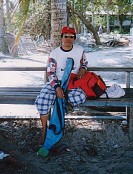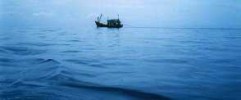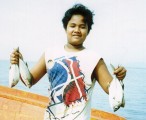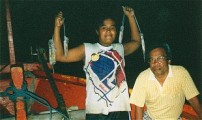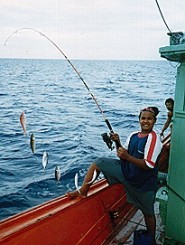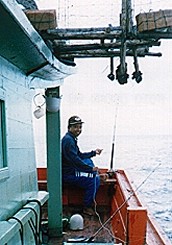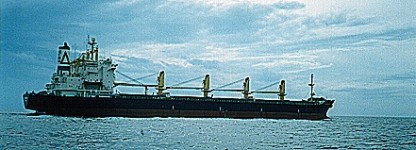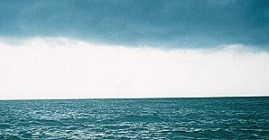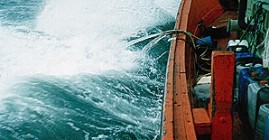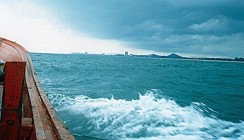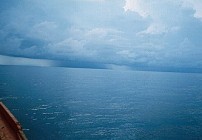
The famous "Five Islands" among Terengganu fishermen; from right (i.e. towards the mainland): Yu Besar, Yu Kecil, Gelok, the unmistakenable Bidong and Karah. Redang and Pinang are the background between Yu Kecil and Gelok. From this view, roughly north-west, and the visibility depthness of the islands, a fisherman judges that Yu Besar, Yu Kecil, Bidong and Karah are in line; the colour is dark-green. Gelok is slightly off to the background, but Redang and Pinang is surely far off away for its colour is misty-green. Extra-polated backward from this view, Bidong is visible as far as a hundred and fifty kilometers away, close to the Petronas Oil Rigs. These are the "navigational aids" used by the Vietnamese boat people in the late 70's to arrive at Bidong.
   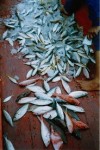
On the way to the grounds or spots, we always stop at the "unjang" for small fish to make baits and to ensure our menu too. My sons, #3 and #4, especially the latter always pull better fish. |
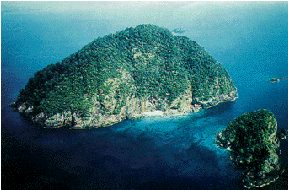
Bidong by air, Karah is the smaller on the right foreground. Frequently we head for Bidong area, it is about four hours cruising from the jetty at about ten knots. We pull mostly snapper types fish in this area, which is full of coral reef, especially on the mainland sides of the islands. It used to be many big snappers, like "ikan merah" and "ibu kerapu" here, but now mostly "kerisi" not bigger than 8" size. There are a lot of "bayan" (the equivalent of birds of paradise) but their sizes are too small. Nonetheless, if we come here we are sure of our dinner and lunch menu of fresh white hot fish meat.
|

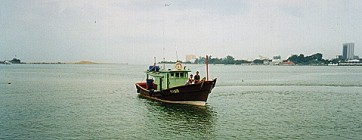
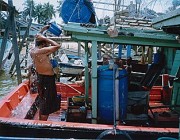 Back to jetty and docked. The most pleasurable thing to do after docking is to have a real wet bath of fresh river water at the jetty.
Back to jetty and docked. The most pleasurable thing to do after docking is to have a real wet bath of fresh river water at the jetty.
